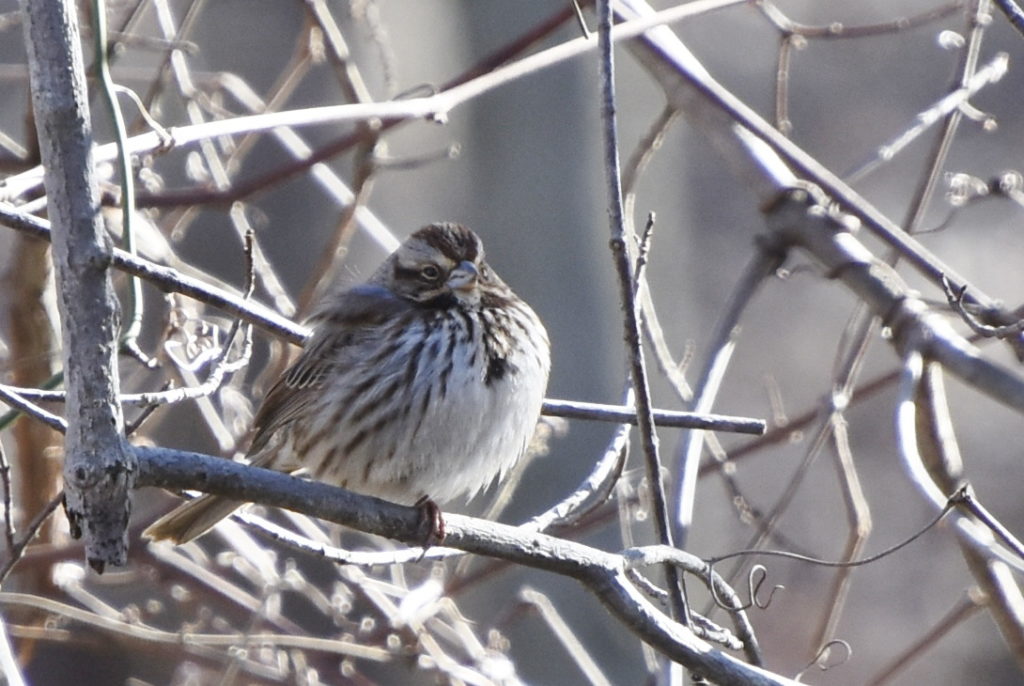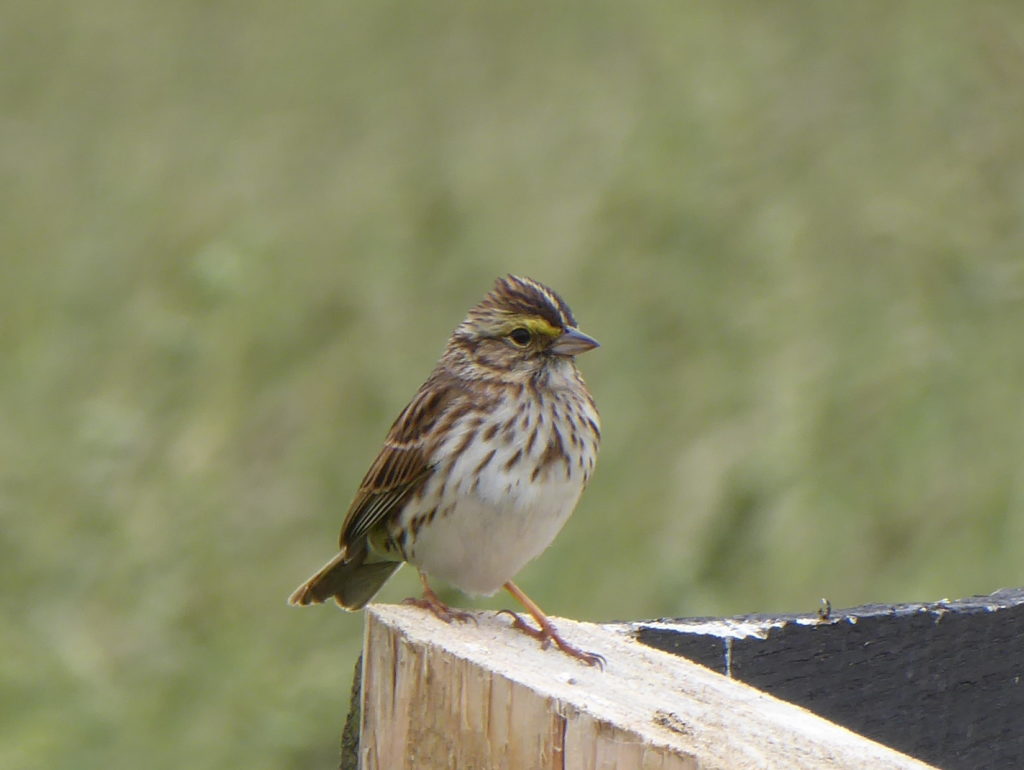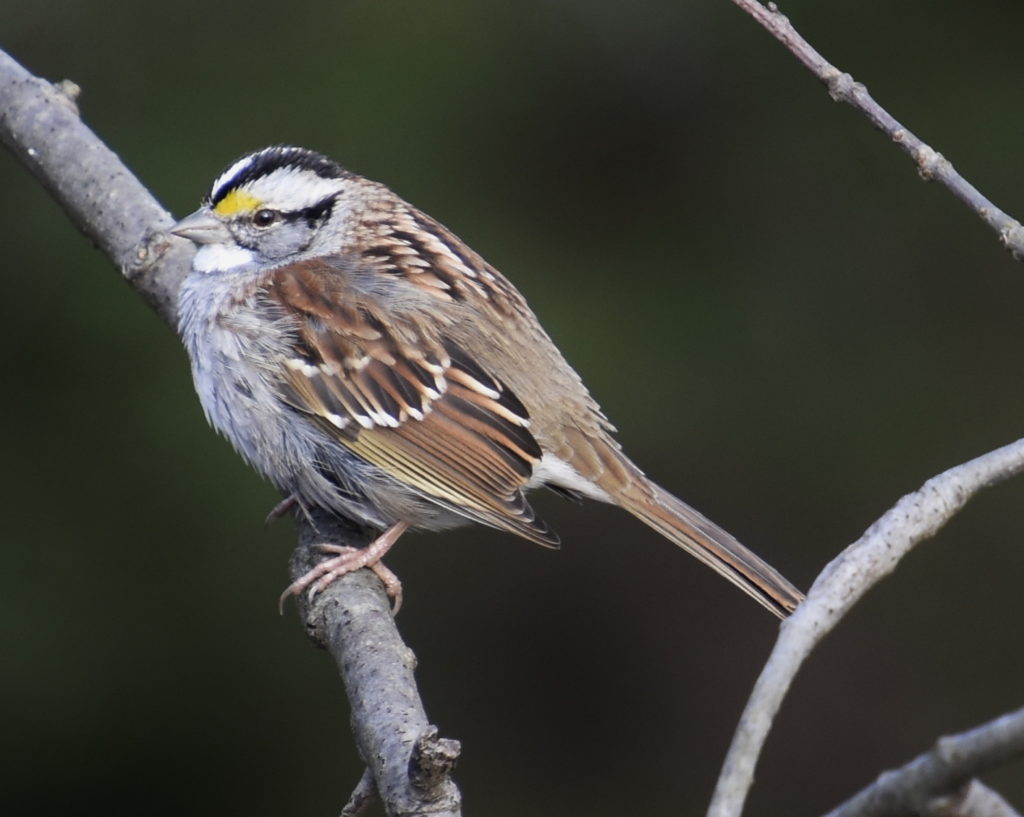Some of our local birds are easily identified (Cardinals, Robins, Mallard Ducks, etc.) but there are also many challenges for the birder. Sparrows form a large group that falls into this category. The term “LBJ” (having nothing to do with our 36th president) is the moniker for sparrows and other nondescript brownish birds, short for “little brown jobs”.
In general, they show a brown coloration, and may have streaks of various thickness and intensity, with head patterns and conical bills typical of seed eaters. Many of them like to root around in the leaf litter scratching with their feet in search of food. They can be found in woodlands, open fields, grassy fields and seaside marshes.
At Lumberton we will encounter, at different times of the year, Song Sparrow, White-throated Sparrow, and Chipping Sparrow. Less common but occasionally seen and heard are Field Sparrow, Fox Sparrow, Savannah Sparrow, Swamp Sparrow, American Tree Sparrow and White-crowned Sparrow. The ubiquitous House Sparrow is an Old World Sparrow that was introduced into the US and has established itself throughout the country. Also included in this group are two birds allied with the sparrows, namely, Eastern Towhee and Dark-eyed Junco. The Junco is very common in winter and can be seen at feeders and flying into shrubbery around our units.
Song Sparrow has a striped face and streaks that tend to coalesce into a central spot on its chest. It likes thickets, brushy fields and woodland edges. It is fairly common in our meadow and woodlands, and will often sit out in the open on shrubs and tree branches. During the nesting season it will also announce its presence in song. The Savannah Sparrow can look very similar to the Song, as it too has a streaked breast and sometimes a central spot. Often, but not always, it shows yellow between the bill and eye. The tail of the Savannah is notched or forked, while that of the Song is rounded.
White-throated Sparrow is our most abundant of the group; it arrives in October and stays with us into April. It is very common at feeders and on the grass around the feeders. You will also find it in the underbrush scratching leaves out of the way looking for a meal. It has a very distinctive white throat, black and white striped head and often bright yellow between the bill and eye. It also has a second color morph or form, with tan head stripes instead of white. Both are present here at Lumberton.
Chipping Sparrow is most abundant in the summer and fall. It has a beautiful chestnut colored cap and black eye-line. It can often be seen in our meadow flying out of a tree and landing on the grass or even walking along the perimeter path. It has a very distinctive voice that is a one note trill that sounds like the whirring of a sewing machine.
Dark-eyed Junco (sometimes referred to as a Slate-colored Junco) is easily distinguished by its slate gray head, chest and back with a white belly. The female is a noticeably lighter shade of gray. Both show white edges along the tail feathers, best seen as the bird flies away as it seeks cover in the plantings in along the edges of our meadow.
Field Sparrow might be seen, but you are more likely to hear it before you see it. It is a very plain brown bird with a white eye ring and pinkish bill. The song is a soft series of notes whose frequency increases toward the end. This song is often rhythmically described as a ping pong ball dropped from some height onto the table.
Sparrows are seen all year in our neighborhood; they aren’t the easiest birds to watch, but repay careful observation.







